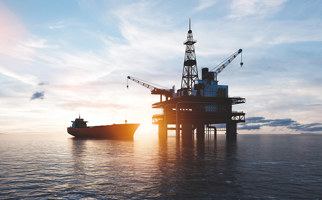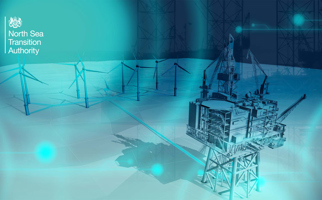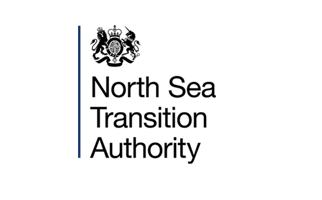
Pauline Innes, the NSTA’s Head of Decommissioning and Supply Chain, delivered a pre-recorded presentation during a session titled “Decommissioning Learnings from the UK and Europe” at the AOG Energy conference and exhibition in Perth, Australia on 16 March.
Pauline spoke about the North Sea industry’s growing expertise in decommissioning and outlined the NSTA’s approach to help ensure this work is carried out in a cost-efficient manner.
Watch the presentation, or read the speech in full:
AOG Energy 2023
A North Sea Perspective: Offshore decommissioning in the UK
Hello everyone.
I hope that your conference is going well.
I know you’ve got a packed agenda, and I’m delighted to see it’s got a healthy focus on decommissioning, not only in today’s subsea forum, but also in the Industry Forum yesterday.
I am sorry I can’t be with you in person, but I am grateful for the opportunity to contribute to this morning’s session through this pre-record.
My name is Pauline Innes. I’m the director for supply chain and decommissioning at the North Sea Transition Authority. I’ve worked in decommissioning in the UK for nearly eight years and so it’s great to have this opportunity to share the lessons we’re learning as we evolve and mature our industry.
There’s a lot going on in decommissioning in the UK and I won’t manage to cover everything in my presentation, but I’ll aim to give an overview and if I’ve whetted your appetite, I’d be happy to have a follow-up conversation with you.
Or indeed, I know there are several decommissioning experts from the UK presenting at the conference who I’m sure will be happy to explain what we’re doing in more detail.
And there’s also a good number of UK companies exhibiting at the event.
As you’ll hear from me in the coming few minutes the decommissioning supply chain are our experts – they’re the ones who are delivering, so please do go and seek them out.
But let me start with some context.
So, who are we?
The North Sea Transition Authority regulates and influences the oil, gas and carbon storage industries in the UK, and we’re driving the creation of an integrated energy system.
That means not only holding industry to account for traditional regulatory oil and gas obligations – supporting the UK’s energy security – but doing that in a way that aligns with the UK’s net zero target.
That’s why we are working with industry to reduce Greenhouse Gas Emissions from production and we’re making good progress having seen a 22% reduction in emissions between 2018 and 2021.
But there’s more to do, and we’re working with other regulators and governments to decarbonise production, harnessing renewable energy from offshore wind.
75% of the UK’s energy currently comes from oil and gas and even as we increase the rate and availability of new energy sources, it will continue to play an important role during the transition.
Our 33rd licensing round closed in January, generating 115 applications for 258 blocks, or part blocks. We’re reviewing the applications and expect to start awarding licences later this year.
But output from the UKCS is declining and to meet our net zero ambitions we need to accelerate the transition, and in June last year we launched our first carbon storage round, receiving 26 bids from 19 companies.
We’re finalising our review of the applications and hope to provide more details soon.
Once the new sites are in operation they will make a significant contribution to the aim of storing 20-30 million tonnes of carbon dioxide by 2030.
A decline in hydrocarbons also means an increase in decommissioning, and over the next decade we’re anticipating around 37bn Australian dollars will be spent on decommissioning in the UK.
When you add that to expenditure in energy security, emissions reduction and action to accelerate the transition we’re estimating around £220bn (392bn A$) of spend by the end of the decade.
That’s a lot of work for the supply chain, supporting thousands of jobs.
Turning to decommissioning, there’s no doubt that decommissioning redundant oil and gas infrastructure is a critical step on the road to net zero.
And for us it is becoming a well-trodden path.
The UK has been decommissioning since the early 1990s, in theory giving us about 30 years of experience. But it’s only in the last five or six years that it has become a mainstream activity in the basin.
I’ll talk about what that’s looked like in a minute, but first I want to explain the regulatory framework, because it influences what we do and how we deliver it.
So, owners of offshore oil and gas infrastructure have an obligation to manage their energy legacy, either through the repurposing of infrastructure or by decommissioning it.
We’ve traditionally worked on the assumption that infrastructure will be removed from the marine environment when oil and gas production ends, but with the emergence of alternative energies and carbon storage we’re seeing opportunities to repurpose some specific pieces of infrastructure.
Our understanding of repurposing is growing, and there’s no doubt that some of our redundant oil and gas infrastructure may have a life beyond oil and gas.
There’s a subtle but important distinction between re-using or repurposing infrastructure that’s come ashore and reuse or repurposing in-situ.
If you re-use or repurpose infrastructure onshore, then you’ll have removed it from the marine environment and therefore decommissioned it. But if you repurpose infrastructure in-situ then the decommissioning obligation gets transferred to the new owner/or user.
We’re currently working with operators to identify repurposing opportunities and seeing that pipelines offer the greatest opportunity, especially the larger trunklines. It might be small in number but it could make a large impact.
However, the work is also showing that decommissioning remains the likely destination for redundant oil and gas infrastructure, and it’s a big and growing part of capital spend in the UK.
Decommissioning is regulated by central government, managed through OPRED - the Offshore Petroleum Regulator for the Environment and Decommissioning.
OPRED not only manages the liability for decommissioning on behalf of taxpayers, but it is also responsible for reviewing, monitoring and approving decommissioning programmes.
OPRED makes sure that decommissioning is aligned with the UK’s environmental ambitions, and they specify that decommissioning must aim to achieve a clear seabed.
They have published detailed guidance for many years setting out the requirements for industry.
It’s a system that’s understood by industry, and it’s shared widely across the globe as countries, including Australia, look at developing their own decommissioning system.
So, I’ve said we’ve been decommissioning in the UK since the 1990s but it’s only over the last five of six years that it’s become a major part of our landscape.
Industry has spent nearly the equivalent of 11 bn Australian dollars on decommissioning since 2016.
That’s involved work across the full spectrum of activity, across the 11 categories of the work breakdown structure as set out in this slide.
As with any capital investment programme, when work is executed offshore it’s underpinned by significant onshore planning and engineering. And in decommissioning the UK has built exemplary experience in environmental assessment, survey, engineering and project management to support project delivery.
Where platforms are concerned, we’ve learned that managing opex after production has ceased is critical. That means decommissioning wells quickly after CoP, or indeed even starting to P&A wells during late life. So, expertise in engineering well decommissioning alongside executing work has become a major focus for us.
With well P&A taking up about half the cost of decommissioning it’s been right to focus on it.
And we’ve moved beyond platform wells to include subsea wells too.
Over the past two years we’ve seen significant growth and expertise in well decommissioning, with operators and the supply chain testing innovation in contracting approaches to aggregate scope and give schedule flexibility, establishing the campaign model as a means to delivery.
The model is showing that spending time doing detailed engineering onshore to determine the right vessel and scope can lead to efficient offshore delivery. Couple that with a highly skilled offshore team who are experienced in well P&A, with long-term certainty of work, means you minimise time offshore on each well and thus minimise cost.
While that just feels like common sense, the industry has had to change some of its standard approaches to make it happen. That takes commitment and effort from operators and the supply chain.
The topside removal and onshore dismantlement market are a highly visible and important part of decommissioning. And the model that many operators have moved to is a single lift of a topside transferred to shore for safe dismantlement and onward recycling or disposal.
That’s involved the heavy lift market and it’s been working well for the UKCS, but competition for services is increasing globally and where we once had the makings of a smooth, efficient, stable market we’re facing less certain times and now considering the implications of that. What it highlights is never get complacent – you might think you’ve got an efficient market but things can change so it pays to keep learning.
On the topic of learning it’s worth noting that there is a good culture of learning and sharing experiences of decommissioning and membership bodies like Global Underwater Hub and Decom North Sea play a significant role in driving excellence.
But returning to the topic of onshore dismantlement, the UK is building strong expertise, expanding capacity and capability.
Over the course of the last couple of years we’ve seen Veolia and Peterson use controlled explosion to collapse the Ninian Platform, reducing the risks associated with working at height.
We’ve also seen the CessCon facility take a different approach, focusing on careful dismantlement of a topside to support reuse and recycling of materials – seeing value where others see waste and supporting the circular economy. And there are multiple other examples I could share with you. All show that our onshore expertise is growing including in the handling of hazardous materials and waste management.
The last thing I want to say on this slide is that we recognise it’s still early days for us and we’ve got a lot of infrastructure to decommissioning – much of which is subsea, with over 250 subsea systems. We’ve also got a lot of pipelines, mattresses and grout bags to remove! Luckily the UK has significant experience of working in the underwater industry so we’ve a strong foundation to draw upon.
Before I finish, I want to briefly talk about the role of regulators in supporting the delivery of cost-efficient decommissioning, sharing our approach and the tools that we’ve developed.
We know that industry likes clarity.
If operators and the supply chain know what’s expected and required of them, they will respond.
At the start of my presentation, I mentioned that OPRED, the regulator for decommissioning, has published guidance notes. At the NSTA we’ve produced a complimentary set of guidance setting out our strategy and the expectations we have on operators. You can find all of these on our website.
I won’t talk about them in detail today but I do want to share the four simple principles in our Decommissioning Strategy:
- Plan early –We’ve recommended a glidepath for operators to start planning six years before cessation of production, but in reality it’s never too early to start planning for decommissioning.
- We need to see improvements in the way work is planned and contracted, to remove waste, build trust and support the development of collaboration – we call that commercial transformation.
- We need to support energy transition, so repurpose and decommission where appropriate, with a view to minimising greenhouse gas emissions; and
- We need to see the development and deployment of innovation and technology.
We steward operators in line with these principles and hold them to account to deliver in accordance with our published expectations.
As well as being having a clear regulatory landscape we also recognise that we hold a lot of data on the market that supply chain and investors value. So, we’ve developed a suite of tools and data to improve the visibility of the market.
Again you can find these on our website, where you’ll see a data visibility pilot project that showcases up-coming work from three operators. This is a combination of projects that have ceased production where decommissioning details may be in the public domain, but it also shares information on fields that have not yet ceased production. So, it gives an indication of market potential over the medium term. We’re looking to expand this project, with the ultimate aim of having all operators on-board.
We’ve also published details of all the suspended wells on the UKCS, in an app. I know that companies have used that to engage with operators to develop campaign proposals. As a reminder we’ve got over 760 suspended wells that need to be decommissioned. That’s a lot of wells and a lot of work – we’ve been decommissioning around 100 well per annum, but that’s increasing to nearer 200 well each year.
We also host the Energy Pathfinder portal where operators can publish details of up-coming tenders.
All of these are designed to increase transparency about work opportunities to improve confidence and certainty in the marketplace.
We’ve had good feedback from industry. We know that sharing up-coming opportunities allows the supply chain to secure investment to build the skills and resources we need now and in the future.
On the topic of future, I want to finish by setting out where we are and where we are going.
Since the NSTA was established, originally as the OGA, we’ve used a cost reduction target as a means of focusing attention on decommissioning.
Our original target expired at the end of 2022 and we’re analysing data to report final progress against the target later this year.
However, during 2022 we engaged with industry on the development of a new target for decommissioning.
Since we started looking a decommissioning cost we’ve seen a steady improvement in cost estimating, we’ve also learned a lot through experience, so we agreed with industry, firstly, that there was value in having a further cost reduction target, secondly that it should look at actual cost delivery as well as cost estimates and thirdly that any cost reduction target should be supported by a series of KPIs.
All of that has taken us to setting a new target of cutting decommissioning costs by 10% in the coming five years.
It might seem counter intuitive to celebrate cost reduction as measure of good performance, especially so if you’re a supply chain company. However, I am convinced that the focus on cost has been a force for good. It’s put a spotlight on decommissioning.
From an operator perspective that’s highlighted the significance of decommissioning as part of the life cycle of the oil and gas industry. That’s led to planning, budgeting, and committing resources that lead to contracts to deliver decommissioning.
From a supply chain perspective, the focus has given confidence that contracts and work are coming. That has supported investment in people and innovation, which in turn leads to improvements in solutions and delivery.
So, with a new cost reduction target in place we are now entering a decade of peak activity, where we expect around £20bn of investment in decommissioning.
That’s going to see activity across the 11 cost breakdown categories I highlighted earlier, and with industry setting a voluntary target that at least 50% of decommissioning will be delivered by UK companies, we’re set to expand and deepen our expertise and capability.
We’re very aware of the global opportunity in decommissioning. UK companies know if they get it right in the UK there are significant export opportunities that await them. That’s a great incentive and we all stand to gain.
History will judge us on how well we’ve managed the energy legacy.
I think we all want to be part of a success story to show the part we played in doing it in a safe, environmentally sound and cost-effective manner.
It’s a work in progress for us all, and there’s certainly scope to create a global network to help us, and events like the AOG Energy Conference are a great opportunity to do that.
I hope the rest of your conference goes well and look forward to hearing the feedback. Thank you.
Please note - There may have been some slight variations in the delivery of this speech


